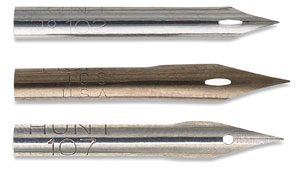There is, perhaps, no more dangerous man in the world than the man with the sensibilities of an artist but without creative talent. With luck such men make wonderful theatrical impresarios and interior decorators, or else they become mass murderers or critics.
~Barry Humphries
You know how we’re all forced to have a day job because making art don’t pay dick? Well I was at my day job (I quit a year ago) having lunch and one of my co-workers asked me how I came up with my ideas. See, when you have a dayjob and people find out you’re creative in some way you’ll get questions like this a lot. People take an interest in your work or at least they pretend to but no one will ever know what the creative process is like until they do it.
My answer to her question was that ideas were the easy part; it’s actually making those ideas into some kind of finished piece that is difficult. I’m serious, ideas are everywhere and at the beginning they’re all equally valid. Every idea you have throughout the course of the day is a book, or a film, or a comic waiting to happen. Every time you make a decision or notice something insignificant you’re forming ideas. These are the building blocks of stories and it’s up to you to craft those building blocks into something that others want to look at.
Now I’m not advocating putting every idea you have into a story and I’m certainly not suggesting that every idea is going to interest an audience but the notion that ideas are rare is certainly false.
There are few creative people that will ever be able to tell you how they come up with ideas and they sure as shit aren’t going to be able to tell you how you should come up with your ideas. That being said, it still seems to be a common question. So, like an idiot, I’m going to try to tackle the question “How do you come up with ideas?”
Part one: The difference between an idea and a story.
Okay, you’re sitting on a beach and a guy walks up to you and asks you directions to a nearby hotel. The guy is noticeably intoxicated. You give him the directions in an unsure way and moments after he walks off you realize you’ve given him the wrong directions.
As you sit there on the beach wondering if you should try to catch him you let your mind wander.
“I wonder where that guy’s going to end up.”
“I hope he gets where he needs to go eventually.”
“why was that guy drunk?”
You sit watching the sunset and you begin to daydream a bit about the whole scenario. You create a series of events in your head about how and why the man was asking directions on the beach.
You decide the guy had been out on the beach drinking because he’d gotten in a fight with his wife. The two of them were on their vacation and staying at a nearby hotel. The fight they had was over a trivial thing like where to have dinner that night. The man had gotten so drunk on the beach that he’d just wandered aimlessly and forgotten which way he’d come from. Some faulty directions from a stranger (you) had caused the man to walk off into the bad part of town and get attacked by a mugger.
You see where I’m going with this? A random occurrence caused you to think a little (and only a little) about a certain series of events. You wondered about the motivations of someone you met and turned those questions into a story without even realizing it.
Part two: a word about Craft
Is the above scenario really a story? No, it isn’t a story but it’s a good building block for a story. This is where craft comes into play… you know our friend craft right? That stuff they talk about in school? That stuff James Kochalka thinks is the enemy?
Craft is your friend, craft is a useful set of experiments that exist to allow you to maximize the potential of your ideas. Some people think that craft is there solely to tell you that you’re a bad artist and that no one will ever love you. Fuck that, you could kick craft’s punk ass and whenever craft gets out of line you can toss it out the window and rely on your gut.
However, craft is a useful tool and it would do everyone good to learn more about making good stories, learning from your predecessors, peers and your mistakes. Relying solely on the strength of your ideas is folly. Have you looked at the internet lately? There’s an idea around every corner, everyone’s got an idea. In the last ten years small press has given rise to blogs and youtube and there’s a means of distribution for
My point, if I have one at all, is that though an idea is absolutely the first real step in a creative endeavor it isn’t really any more important than the rest of the process.
That being said, let’s generate some ideas.
Next Part three: some writing exercises.




